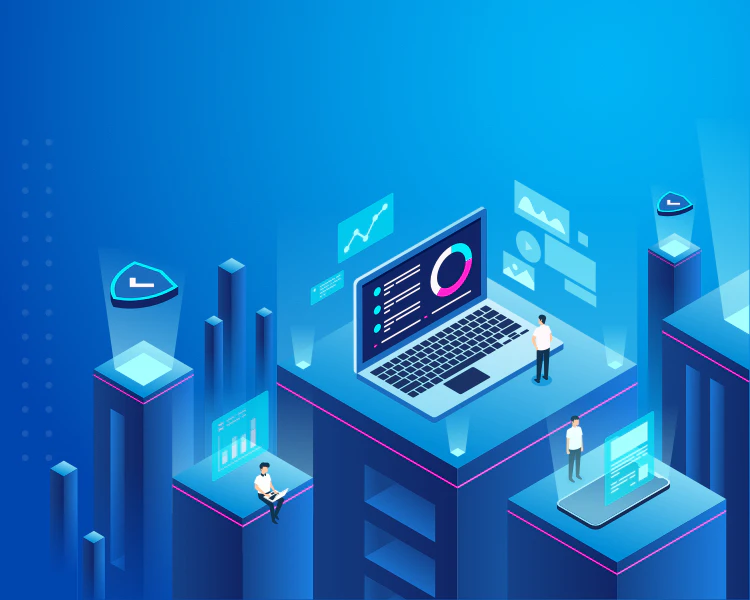Legacy modernization can drive efficiency by eliminating redundant processes, streamlining clunky workflows, and creating new forms of support for employees. However, the ultimate utility of technology depends on the ability of end users to take advantage of its features.
One aspect that frequently goes unnoticed in legacy modernization is the formulation of an effective employee training strategy for the implementation of new systems. Employees who are used to the old workflow may struggle to adjust to the new system, even if it is more efficient. Consequently, this lack of attention to employee training could mean that the anticipated increase in productivity and return on investment from the new technology may fail to materialize. To avoid this, organizations need to be proactive about training employees on how to use the new technology. Undoubtedly, one of the most significant obstacles to overcome during legacy modernization is the loss of productivity resulting from system downtime. Compounding this hurdle with unprepared employees is a worst-case scenario.
Conceptualizing the Best Way to Teach New Technology
Business application training refers to the formal education that employees receive to effectively utilize organizational technology. An integral aspect of the planning process for legacy modernization is to include comprehensive business application training, ensuring that the workforce undergoes necessary upskilling before transitioning to the new system.
Ideally, employees should feel completely comfortable with the new technology prior to its implementation to avoid any additional gaps in productivity. In addition to upskilling, companies should create educational programs that provide multiple learning modalities, including in-person training with live teachers and on-demand modules for review. Everyone learns differently, so having the information presented in multiple ways is critically important.
Even with a lot of time and resources invested in preparing employees for the transition, there are still several common issues that can arise and limit the benefit of legacy modernization. One common issue has to do with employee sentiment about the transition. Too often, companies invest a great deal in training employees how to use a new system without taking the time to sell them on that technology. Employees who are accustomed to a particular system need to be shown how embracing the new technology will significantly simplify their work lives, offering them improved efficiency and convenience. Otherwise, they have little motivation to learn the new system. By taking the time to outline the benefits of the new system, companies can ensure employees become much more motivated to learn it.
Using a Pilot Project to Iron out the Potential Pain Points
Many of the other common issues that arise with technology can be addressed with adequate planning and testing. One of the best approaches is to run a pilot project. Technological transitions can be devastating if anything goes wrong. For that reason, migrating all operations to the new applications at once is a poor choice. Instead, a pilot project can test the applications and give employees hands-on experience with the new technology in a controlled, yet live, setting. Organizations should implement the pilot project on low-priority function and see what feedback employees have about translating non-live learning to the live setting and working with the new technology in general. Such a process helps identify pain points that can be fixed before the larger implementation.
The lessons learned through the pilot program can be used to develop new training materials, such as simulations based on real-world issues and other scenario-based approaches. Some points can be developed into microlearning to be shared easily among employees preparing for the transition. Ideally, these lessons turn into on-demand training materials since they address important, real-world problems, and instructors may not always be available to help. Of course, in-person teaching with live instructors should also be offered. Pilot projects can be scaled over time and move to related yet distinct functions. Such an expansion allows employees to continue using the skills they have learned while picking up a few new ones to minimize the overwhelming feeling that would come from a massive, one-time transition.
Taking Further Steps to Ensure a Smooth Transition
Beyond these steps, it is important that all technology users receive a walkthrough of the new software. Typically, this should include an introduction to the new technology and be conducted by either a representative of the developer or an advanced in-house user. This walkthrough introduces people to the basic functions of the software and gives users the chance to try out these processes. Another important step to take is to identify superusers. Eventually, some employees will stand out from the crowd in terms of their ability to use the software. These employees can become trainers and field questions that arise among users who are struggling. Identifying superusers early can help them get the extra training they need to teach. Finally, the organization must seek out feedback frequently and consistently. Feedback is important for refining the training or even the software itself based on user experience.

